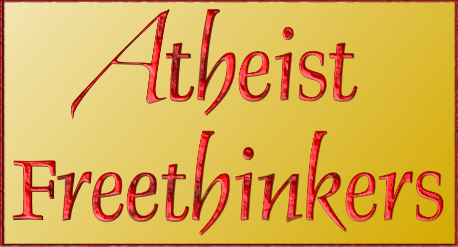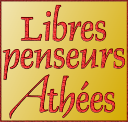Understanding the Quebec Superior Court Decision about Bill 21
Rendered by Justice Marc-André Blanchard, 20th April 2021
What you need to know
David Rand
- The court decision reveals very clearly that the judge hates Bill 21 and secularism and does everything in his power to repeal Bill 21 but is limited in the damage he can do because the law’s authors had the wisdom to invoke special Charter clauses which limit the power of judges.
- Bill 21 is a very moderate and modest secularism law which bans some civil servants, including teachers, from wearing religious symbols while on the job, just as the Quebec Public Service Act (PSA) bans them from making partisan political displays. In fact, Bill 21 is much weaker than the PSA, and also weaker than similar laws in some European countries. Bill 21 also defines secularism and adds that principle to the Quebec Charter, and it bans face-coverings when giving or receiving civil services.
- There are two Charters which are relevant:
- Quebec Charter of Human Rights and Freedoms, adopted 27th June 1975 and effective since 28th June 1976, which takes precedence over all other Quebec legislation. However, to protect parliamentary sovereignty, section 52 allows a law to take precedence over certain sections of the Charter if the law states explicitly that it does so.
- Canadian Charter of Rights and Freedoms, part of the Canadian Constitution of 1982, endorsed by nine out of ten provinces—but never signed by Quebec. Section 33 is the so-called “notwithstanding” clause which allows legislatures to override temporarily (for five years) certain portions of the Charter and whose insertion was negotiated by some provinces, in particular Saskatchewan, in order to protect parliamentary sovereignty. Except for the use of section 33, the Canadian Charter is supreme in Canada.
To summarize, we are dealing with a power balance between the legislative branch and the judicial branch. The authors of both Charters have attempted to reach some sort of equilibrium between the two branches.
- Quebec Bill 21 invokes the “notwithstanding” aspects of both the Quebec Charter and the Canadian Charter in order to protect the legislation from being struck down by the courts.
- The court decision validates most of Bill 21 for the simple reason that the judge had no choice, because that law invokes the notwithstanding clause of the Canadian Charter. However, the judge uses two loopholes—i. e. sections 3 and 23, to which the notwithstanding clause does not apply—in order to do as much damage as he could to Bill 21.
- Section 3 of the Canadian Charter guarantees the right to vote and to be eligible to serve as member of a legislature. The judge used this to strike down the part of Bill 21 which bans sitting MNAs (Members of National Assembly) from wearing face-coverings. (NOTE: Bill 21 does not ban sitting MNAs from wearing religious symbols, only the speaker and vice-speaker of that Assembly.) Thus, as a result of the judge’s decision, an MNA may participate in the Assembly wearing a niqab.
- Section 23 of the Canadian Charter deals with English and French minority language rights. The judge used it to strike down the application of Bill 21 to English-language schools. This amounts to discrimination against English-speaking children, depriving them of the protection which Bill 21 affords them. The implications of this exemption are a partitioning of Quebec along linguistic lines, with different rules for different language groups, rules which have nothing to do with language. Does this mean that French-language school boards in English Canada can now ban their teachers from wearing religious symbols?
- In both cases—the right to elected office and minority language rights—the judge is using an extremely exaggerated interpretation of the corresponding right. In fact, his interpretation is absurd. In what universe does banning teachers from wearing religious symbols in the classroom discriminate on the basis of language? In what universe can one possibly justify allowing an elected member of a legislature to hide their face while participating in that assembly? How on earth could banning the face-covering interfere with that person’s right to run for public office?
- The judgment rejects out of hand laws in several European countries which are similar to (and sometimes much more extensive than) Bill 21.
- The judgment rejects Quebec’s specificity within Canada but asserts anglophone specificity within Quebec. Hence the exemption for English-language schools. The inconsistency—or rather, hypocrisy—here is blatant.
- The judgment rejects out of hand any comparison between political and religious symbols. The judge does this by claiming that banning religious symbols (unlike political symbols) violates the “soul or essence” of the religious believer. The judgment reads as if it were written by a theologian, even criticizing Bill 21 for ignoring the law of gods (« elle ne peut en faire abstraction »). Is the judge so naïve as to think that such laws of “god” were written by someone other than human beings? His thinking is medieval.
- The judgment essentializes religious affiliation, as if it were innate and immutable like a racial identity. This essentialization implies the complete negation of freedom of conscience, as if each person must remain prisoner of the religious tradition into which he or she had the dubious luck to be born. Thus, religion as destiny!
- The judgment privileges religions by granting freedom of religion a higher priority:
- Than freedom from religion (while these two freedoms should have equal importance).
- Than freedom of conscience (which in reality includes the other two as subsets).
- Than freedom of political opinion, using the excuse of the “soul or essence” to claim that religious symbols are way more important than political symbols. In reality, a religious symbol is a political symbol, especially when worn by a civil servant in a position of authority.
- The judgment participates in the hysterical campaign of hatred against secularism and against Québécois who support Bill 21 by a large majority, by referring to them with expressions such as “tyranny of the majority.” This anti-Québécois prejudice has been a major theme throughout Canadian history.
- The organization with which I work, Atheist Freethinkers, intervened in the court case, arguing for Bill 21. The judgment sums up our intervention, but does not take it into account. The same can be said for the two other associations which intervened in favour of the legislation —the MLQ (Mouvement laïque québécois) and PDF-Q (Pour les droits des femmes du Québec), a feminist organization. Arguments for Bill 21 are simply not taken into account. The judge’s argumentation and conclusions are based almost entirely on the arguments presented by opponents of secularism.
- In particular, the judgment overwhelmingly emphasizes the freedom of religion of teachers and civil servants, while completely ignoring the freedom of conscience of school students and civil service users. Thus, the judgment places freedom of religion above all other freedoms, and in particular above freedom from religion (as mentioned above in point 13).
- One small piece of good news: the judge rejects the specious argument that Bill 21 violates sexual equality guaranteed by article 28 of the Canadian Charter. However the argument used is highly technical and does not affirm the most important point: that it is religion—whose influence in the State Bill 21 attempts to limit—which is the cause of sexism and misogyny. Bill 21 helps to protect sexual equality and it is absurd to assert the opposite.
- The Appeal: the Quebec government immediately announced its intention to appeal the judgment as. in the government’s opinion, it creates “two Quebecs” by exempting English-language schools. Several opponents of the Bill—the NCCM (National Council of Canadian Muslims), the CCLA (Canadian Civil Liberties Association) and the FAE (Fédération autonome de l’enseignement)—have indicated that they too will appeal in an attempt to strike down Bill 21 entirely. The FAE is a teachers’ union which has not consulted its members on this issue since 2012 when 77% of 1955 teachers agreed that State representatives should not wear visible religious symbols. In other words, the union leadership is pursuing an ideological goal and is disconnected from its own membership.


 AFT on Twitter
AFT on Twitter Amis et amies de Libres penseurs athées
Amis et amies de Libres penseurs athées Atheist Alliance International (AAI)
Atheist Alliance International (AAI) Atheist Census Canada
Atheist Census Canada Humanist Perspectives
Humanist Perspectives Libres penseurs athées
Libres penseurs athées LPA-AFT on Heylo
LPA-AFT on Heylo LPA-AFT Youtube Channel
LPA-AFT Youtube Channel Rassemblement pour la laïcité (RPL)
Rassemblement pour la laïcité (RPL)
Leave a Reply